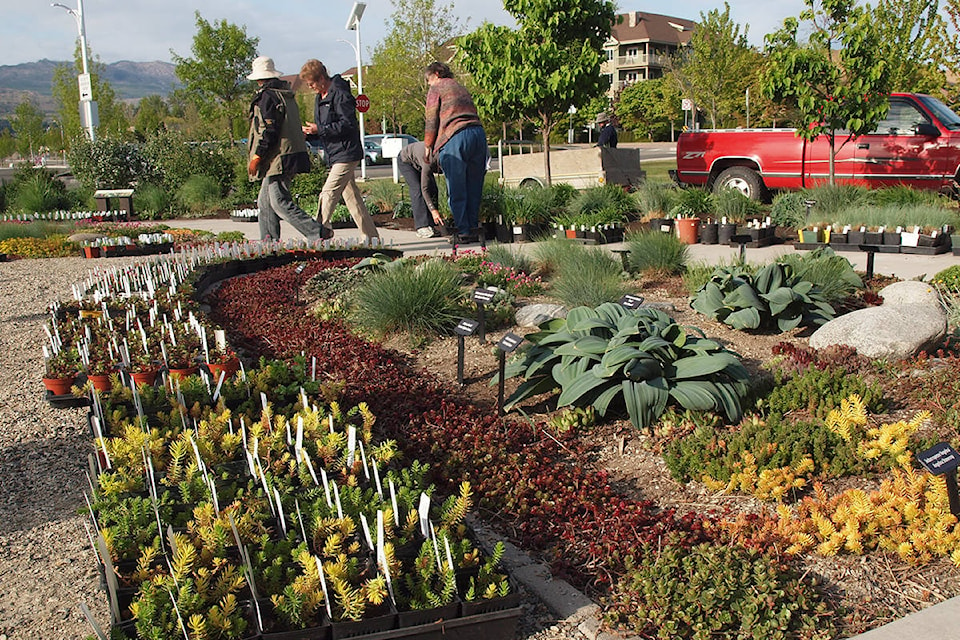Typically the weather in June and early July is warm with an occasional hot day. This year is not typical. In an average year, by the time hot weather arrives, at the end of July and August the vegetables and annuals have developed a good sized root system allowing them to access moisture from a larger area.
With record breaking hot weather early in the season it is very important to keep plants new or established watered.
The most efficient way to water is to loosen the soil around the plant and then use a low sprinkler or soaker hose for 30 minutes to an hour. Stop watering if the water starts to puddle as a crust is forming on the soil making it harder for the water to sink below the surface. Allow the puddle to dissipate before watering again.
Annuals with their small root structure need to be watered more often than perennials, trees and shrubs. In hot weather, annuals in a bed might need to be watered daily. If in doubt, dig a hole in the soil to the same depth as the roots to determine the moisture level.
Established perennials have a large root system and should be watered less often for a longer period of time. Plants have different water requirements but the average amount of moisture needed is 1 inch (2.5 cm) a week. Placing mulch on the bed to keep in moisture will mean less watering.
Trees and shrubs that have been planted more than one season have many roots located in the plant’s drip line in the top12 inches (30 cm) of soil. Before the plants show signs of stress, place a soaker hose or sprinkler around the dripline and soak the soil.
Pots and baskets that are overflowing with plants need to be watered every day, every other day or in extreme cases twice a day. How often to water depends on the size and location of the pot. Small pots contain little soil with little water holding capacity and need watered frequently.
Lawn grass loves water. To keep it vibrantly green it needs at least one inch (2.54 cm) of water a week during the hot growing season. When lawn grass does not receive enough water it goes dormant and turns brown. When the weather turns cool and rain returns, the grass breaks dormancy and becomes green.
Trees, shrubs, perennials, vegetables or sod that has been planted this season need to be watered on a regular basis. Watering deeply and less frequently encourages plants to put down deep root systems. The larger and deeper the root system the less likely the plant will be affected by hot dry weather.
If possible water in the early evening or late afternoon to prevent water evaporating before it soaks into the ground.
Linda Tomlinson has gardened in central Alberta for over 30 years. She can be reached at your_garden@hotmail.com.
